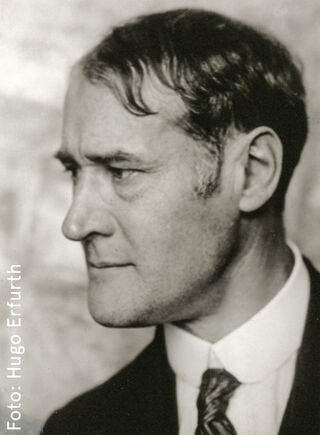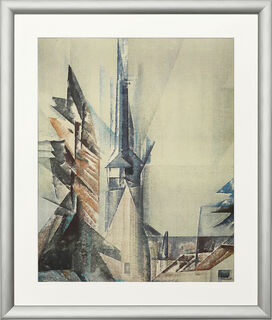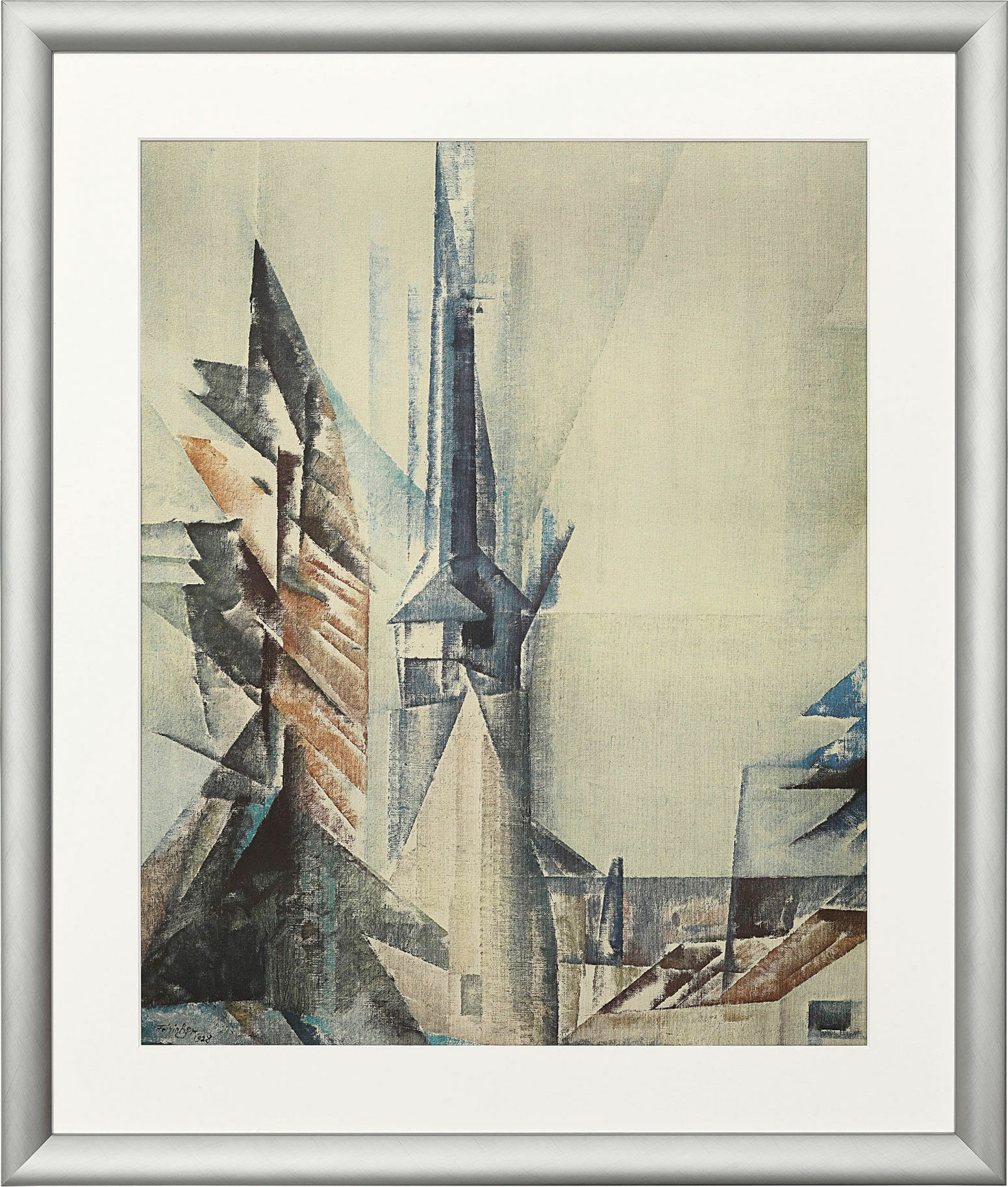Picture "Gelmeroda XI" (1928), framed


Picture "Gelmeroda XI" (1928), framed
Quick info
limited, 500 copies | reproduction, collotype on cardboard | solid wood framing | passe-partout | glazed | size 84 x 99 cm
Detailed description
Picture "Gelmeroda XI" (1928), framed
This limited-edition masterpiece by Feininger is produced in a complex collotype process. This technique, which is very rare today and more than 140 years old, makes it possible to depict true halftones, i.e. to reproduce them completely and not through halftone dots of the primary colours. The valuable sheets bear witness to the highest artistic sensitivity in their production. The result is true to the original colours, which art connoisseurs in particular desire and which also do justice to the sensitive colourfulness of Feininger's works.
Original: Oil on canvas, Weimar Foundation, Bauhaus Museum.
Eight colours on handmade paper, limited edition of 500 copies. Framed in a sophisticated solid wood framing with bevel cut passe-partout, dustproof glazing. Size 84 x 99 cm.

About Lyonel Feininger
1871-1956
Lyonel Feininger is known for his depictions of streets, cities and ships, which are composed of prismatically broken forms and inspired by Cubism and the art of Robert Delaunay.
The painter and graphic artist was born in New York in 1871 as the son of German musicians. He first came to Germany at the age of 16 for a concert tour of his parents and stayed there to study at the Hamburg School of Applied Arts and later at the Royal Prussian Academy in Berlin. After a study visit to Paris, he continued living and working for many years in Germany, where he was close to the "Blauer Reiter" artists' group. Starting in 1919, he made his mark as a master for the graphic workshops of "Bauhaus" in Weimar, Dessau and Berlin.
Feininger, along with Schlemmer, most explicitly realised the Bauhaus ideal of order. For him, the starting point is not the human figure but architecture, the strict geometric structure of forms that he observed in Gothic churches. His studies of the architecture of small German towns established his light-flooded, prismatic style, which was to become a model for many artists.
Feininger first devoted himself to German townscapes and churches. During the National Socialist era, the Nazi Party officially declared Feininger’s work to be "degenerate", which forced him to return to New York in 1937. There he created his famous impressions of the architecture of Manhattan and New York.
The field of graphic arts, that includes artistic representations, which are reproduced by various printing techniques.
Printmaking techniques include woodcuts, copperplate engraving, etching, lithography, serigraphy.
Modern art movement. The term originates from the Latin word cubus = cube. A primary influence that inspired the cubists was a concept made by Paul Cézanne according to which the reality could be reduced to the cube, cone and ball. In terms of presentation, cubists focused on the subject from a multitude of viewpoints to represent the subject in a greater context.
Masters of Cubism are Georges Braque, Pablo Picasso, Juan Gris, Fernand Léger. Alexander Archipenko is the best-known sculptor among the Cubists.


